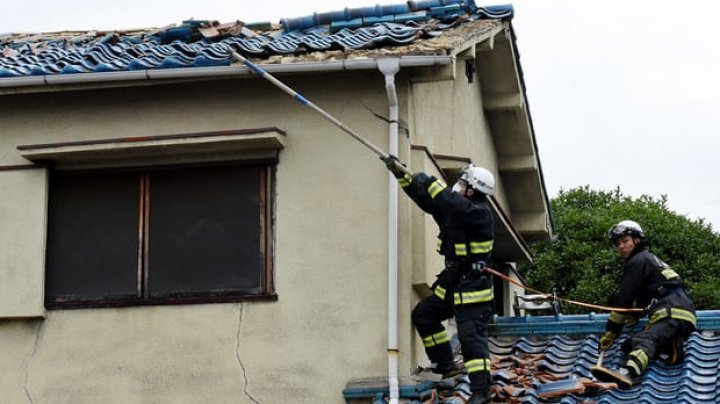Three people have died and more than 200 others were injured after a powerful earthquake shook Japan
 foto: publika.md
foto: publika.md
Three people have died and more than 200 others were injured after a powerful earthquake shook the Japanese coastal city of Osaka and nearby areas during the morning rush hour on Monday.
The victims were named as Rina Miyake, a 9-year-old girl, and Minoru Yasui, an 80-year-old man, who died when they were hit by collapsing walls after the magnitude-6.1 quake struck just before 8am local time, media said. A second man, Motochika Goto, 85, was crushed by a falling bookcase at his home.
The quake, which did not trigger a tsunami, left more than 170,000 households without power in Osaka prefecture and neighbouring Hyogo prefecture, where an earthquake killed more than 6,400 people in the city of Kobe in January 1995.
Monday’s earthquake was of a relatively low magnitude but caused violent shaking due to its shallow depth of 13km. It registered up to a lower-6 on the Japanese seismic intensity scale of 0 to 7. Quakes of a lower-6 intensity make it hard for people to stay on their feet and can topple unsecured furniture and other items.
Officials warned of possible strong aftershocks. “There are fears that the risk of house collapses and landslides has increased in the areas shaken strongly,” said Toshiyuki Matsumori of the country’s meteorological agency. “Please make sure that you are fully on alert about seismic activities and information on rainfall, and stay clear of dangerous places.”
Experts said the earthquake could have involved a fault that has not moved for more than 10,000 years.
“We may have to consider the possibility of even greater earthquakes following, as happened in the quakes in Kumamoto,” Kyodo news quoted Shinji Toda, an earthquake geology professor at Tohoku University, as saying.
Dozens of people were killed in Kumamoto in south-western Japan in April 2016 after two powerful earthquakes struck within two days of each other.
TV coverage of the immediate aftermath of the Osaka quake showed ruptured underground pipes spewing water on to the street, while firefighters were seen tackling a blaze at a home on the city’s northern outskirts. A number of other fires were reported.
Kansai Electric Power said no irregularities had been detected at three nuclear plants in the region. Several rail services were suspended, including the bullet train. Television images showed passengers getting off trains and walking along the tracks between stations.
The car manufacturer Daihatsu said it had suspended operations at its plants in Osaka and nearby Kyoto, while the consumer electronics firm Sharp said its factories were operating normally.
“I saw the ceiling and the floor undulating, and I could barely stand. I was very scared,” Katsufumi Abe, who was at Osaka’s main railway station when the quake struck, told Kyodo.
The prime minister, Shinzo Abe, said the government was assessing the damage and that its priority was to rescue anyone trapped inside buildings. He said he had instructed officials to “swiftly collect information on the damage, do their utmost to rescue people and save lives… and provide timely information to the public”.
An American visitor to the city described being woken up by violent shaking. “We were sleeping and it woke us up abruptly,” Kate Kilpatrick, who was staying in a hotel in Osaka, told Reuters. “It was so terrifying because this is my first earthquake. I thought it was a nightmare because I was so confused. The whole world was aggressively shaking.”
Some residents said their homes had not suffered structural damage but that the shaking had sent objects flying off shelves.
Monday’s earthquake was the third measuring higher than magnitude-4 to have struck Japan – one of the world’s most seismically active countries – in recent days.
In March 2011, a magnitude-9 earthquake triggered a tsunami that killed more than 18,000 people along Japan’s north-east coast.